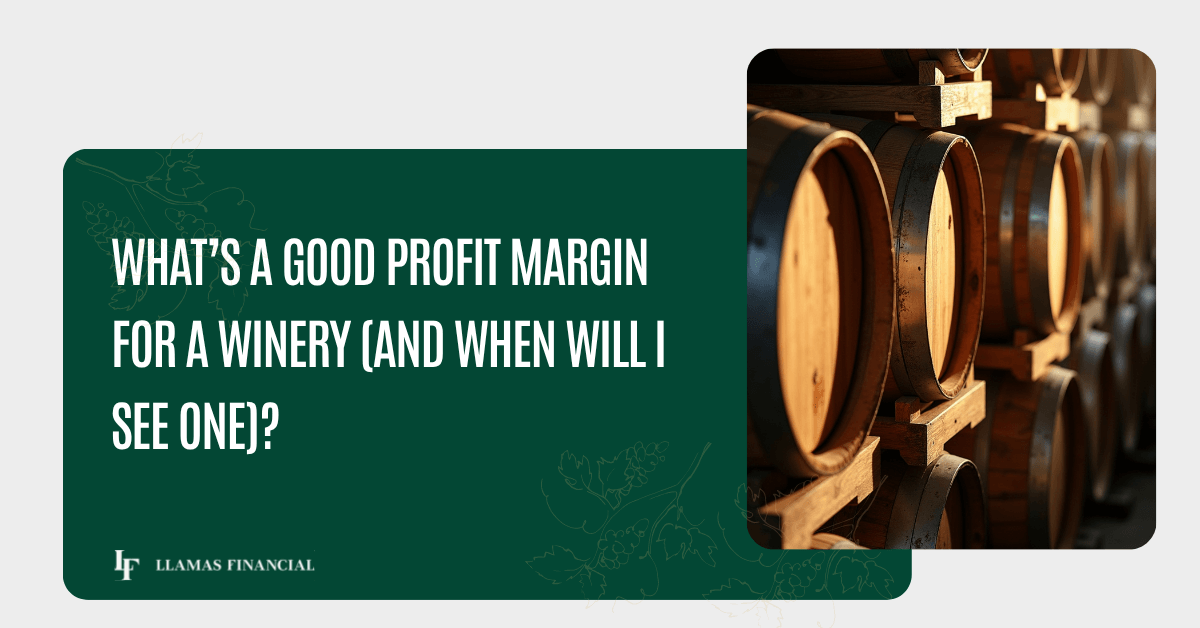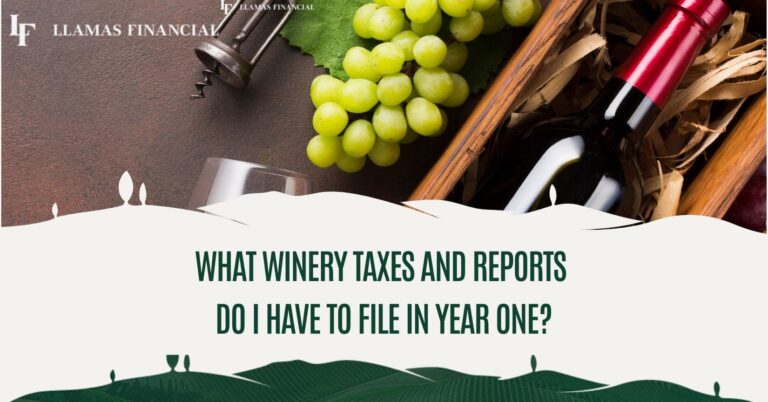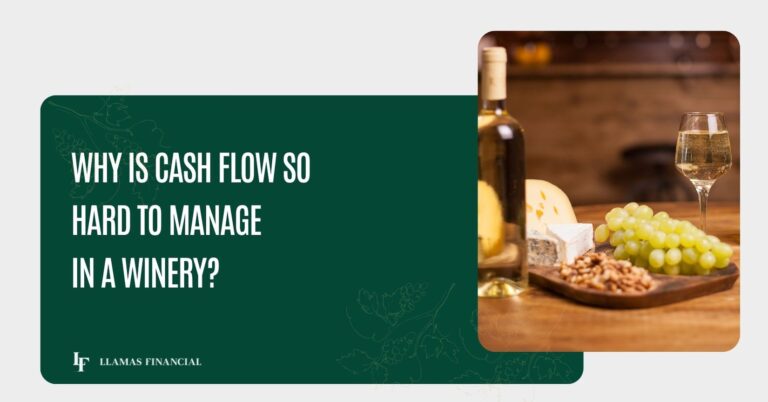If you’ve ever asked yourself, “When will my winery actually start making money?” you’re not alone. Profit margin for a winery is one of the most common questions we hear from winery owners, and it’s also one of the hardest to answer because the timeline depends on so many factors: how you source grapes, what channels you sell through, and how much upfront investment you’ve made in land, equipment, and labor.
The good news is that there are benchmarks and patterns you can look for. With the right setup, most wineries can eventually reach healthy margins — but it takes time, patience, and smart financial management.
Why Winery Profit Margins Are Different
In most businesses, you can start earning profits within months. You buy inventory, sell it quickly, and track the difference. In a winery, you’re paying for vineyard labor, grapes, barrels, and bottles long before your first sale. If you’re aging wine for a year or two before release, your costs pile up while revenue is delayed.
This lag is why many wineries show losses in their early years. It doesn’t necessarily mean your business is unprofitable. It often just means your investment is sitting in inventory, waiting to be sold. A winery accountant can help you see the difference between a true loss and a timing issue.
What’s Considered a “Good” Profit Margin for a Winery?
Most established wineries aim for a 15 to 20 percent net profit margin once they’re fully up and running. That means that for every $1,000 of wine sold, $150 to $200 should be left over after all expenses. But this number can vary widely based on sales channels and business model.
- Tasting Room and Wine Club Sales often deliver margins of 50 percent or more on each bottle sold, since you’re capturing the full retail price.
- Wholesale Distribution usually has slimmer margins, sometimes as low as 20 to 30 percent, because you’re selling at a discount to distributors or retailers.
- Direct-to-Consumer Shipping falls somewhere in between, depending on your pricing and shipping costs.
That’s why many successful wineries build their strategy around maximizing direct-to-consumer sales while still using wholesale as a way to expand brand awareness.
How Long Until You See Those Margins?
This is the part most new winery owners find surprising: it may take three to five vintages before you see consistent positive margins. The early years are cash-intensive as you invest in land preparation, vineyard development, and cellar equipment. Even if you’re buying grapes instead of growing them, you’re still paying upfront and waiting to recover those costs.
If you’re building your winery from scratch, you should expect a runway of several years before profitability. That’s why smart cash flow planning is so important. A winery accountant will often prepare projections that show when losses will taper off and when you’ll start seeing positive margins based on your production plan.
The Hidden Drivers of Profitability
There are three big levers that determine how soon and how strong your margins will be:
1. Cost per Case
If you don’t know how much it costs you to produce each case of wine, you’re flying blind. Vineyard costs, barrel choices, packaging decisions, and labor all affect this number. A small bump in cost per case might seem minor, but it adds up quickly across hundreds or thousands of cases.
2. Sales Channel Mix
The difference between selling a $30 bottle directly to a customer in your tasting room versus selling that same bottle wholesale for $18 is enormous. Your channel mix is one of the strongest drivers of profitability.
3. Scale
Some costs, like equipment or licensing, don’t increase as you scale up production. That means margins often improve as you produce and sell more wine — provided you can sell it through profitable channels.
Why Many Winery Owners Misjudge Margins
One of the biggest mistakes winery owners make is looking only at net income on the P&L without considering the timing of costs and revenue. Another is assuming that wholesale volume will make up for lower margins. In reality, without careful analysis, wholesale can drag down your overall profitability even if sales look strong.
A winery accountant can help you model what profitability will look like across different scenarios: What happens if you increase wine club memberships? What if you expand your wholesale accounts? What if your cost per case rises by just $2? Seeing the numbers in advance helps you make smarter decisions.
Takeaway
A “good” profit margin for a winery isn’t just about hitting a number. It’s about understanding when those margins will appear and what you can do to accelerate them. With the right channel strategy, cost tracking, and financial planning, most wineries can expect to see 15 to 20 percent margins once they’re established.
But don’t be discouraged if you’re not there yet. Profitability in the wine industry is a long game. The key is having a financial roadmap that shows you where you are, where you’re headed, and how to bridge the gap.
At Llamas Financial, we work with winery owners to understand their margins, plan for profitability, and avoid costly missteps along the way. With a winery accountant in your corner, you can make decisions that move you toward a sustainable and profitable future.





